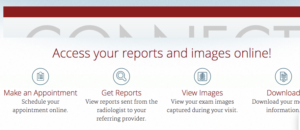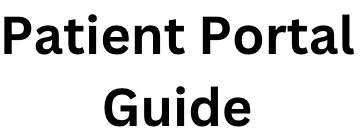The RadNet Patient Portal is an online platform designed to provide patients with convenient access to their healthcare information and services. It is a secure and user-friendly portal that allows patients to view their medical records, test results, imaging reports, and other important health information.
With the RadNet Patient Portal, patients can log in using their unique credentials and access their personal health information from anywhere with an internet connection. This eliminates the need for physical copies of medical records and allows patients to stay informed about their health status at their convenience.
One of the key features of the RadNet Patient Portal is the ability to view imaging services and results. Patients can access their imaging reports, such as X-rays, MRIs, or CT scans, online through the portal. This allows patients to review their results, understand their diagnoses, and discuss them with their healthcare providers.
The portal also offers appointment management capabilities, enabling patients to schedule, reschedule, or cancel appointments through the online platform. This feature streamlines the appointment process, reduces wait times, and offers convenience to patients in managing their healthcare visits.
Secure messaging is another important feature of the RadNet Patient Portal. It provides a secure and private communication channel between patients and their healthcare providers. Patients can use this feature to ask questions, request appointments or prescription refills, and receive responses from their providers in a timely manner.
Additionally, the RadNet Patient Portal may offer access to billing and financial information. Patients can view their billing statements, payment history, and track their financial transactions related to their healthcare services.
The RadNet Patient Portal prioritizes the privacy and security of patient information. It employs robust security measures to protect patient data and ensures that information is securely transmitted and stored within the portal.
Overall, the RadNet Patient Portal offers a range of features that enhance patient engagement, convenience, and access to important healthcare information. It empowers patients to take an active role in managing their healthcare and promotes efficient communication between patients and healthcare providers.
How To Access RadNet Patient Portal
To access the RadNet Patient Portal, follow these steps:
- Open a web browser on your computer or mobile device and go to the official RadNet website.
- Look for a link or tab on the website’s homepage that says “Patient Portal” or something similar. This is usually located in the top menu or footer section of the website.

- Click on the provided link to access the RadNet Patient Portal. This will typically redirect you to the login page.
- On the login page, you will be prompted to enter your username and password. If you are a new user, you may need to register and create an account first.
- If you are a new user, look for the option to register for the patient portal. You may be asked to provide personal information and create a username and password. Follow the registration instructions and submit the required details.
- Once you have your login credentials, enter your username and password in the respective fields on the login page. Double-check that you have entered the correct information.
- After successfully logging in, you should be redirected to your RadNet Patient Portal account. From there, you can explore the various features and access your personal health information, test results, imaging reports, appointment management, secure messaging, and any other available features.
Note: The exact steps to access the RadNet Patient Portal may vary slightly depending on the specific implementation and design of the portal. If you encounter any issues or have difficulty accessing the portal, you can reach out to RadNet’s customer support for assistance.
Final Word
Patient portals, such as RadNet’s, have ultimately led to a dramatic shift in how patients interact with their healthcare providers. Patients can access their health records, test results, imaging reports, and more through the safe and intuitive RadNet Patient Portal. It has several functions that improve accessibility, interaction, and participation for patients.
The RadNet Patient Portal makes it possible for patients to view their medical records online, removing the need for paper copies. As a result, people are better able to monitor their health, take responsibility for their care, and make educated decisions.
The portal’s ability to schedule and track medical appointments saves time and effort for everyone involved. Appointments can be made, changed, or canceled with relative ease, allowing for more timely medical care to be provided to patients.
Patients can talk to their doctors secretly and safely through the RadNet Patient Portal’s encrypted messaging feature. With this function, patients and doctors can have more productive and timely conversations about questions, concerns, and prescription refills.
Patients can gain more insight into their diagnoses with the use of the portal’s access to imaging services and findings. It makes it easier to communicate with medical professionals, which results in more educated treatment decisions and better health outcomes for patients.
In addition, patients may be able to control their healthcare costs and keep tabs on their financial transactions with the use of the billing and financial information that may be made available to them through the RadNet Patient Portal.
As a whole, the RadNet Patient Portal encourages patient participation, provides greater ease, and provides easier access to critical health records. As a result, patients are better able to take an active role in their care, they are able to more effectively communicate with their healthcare providers, and they have a better experience as a whole. Patients can benefit from the portal’s capabilities by receiving up-to-date information, scheduling appointments, and communicating with their healthcare providers in a safe and secure environment.
- Witham Patient Portal Login – Witham.org - August 17, 2023
- Glens Falls Hospital Patient Portal Login – Glensfallshospital.org - August 17, 2023
- VMG Patient Portal Login – Valleyhealth.com - August 17, 2023
